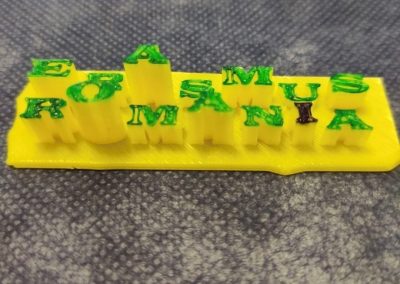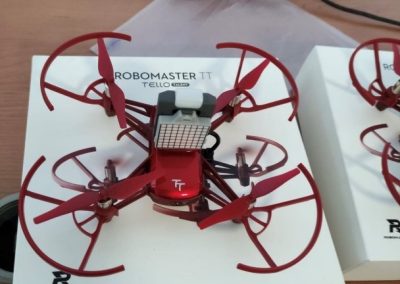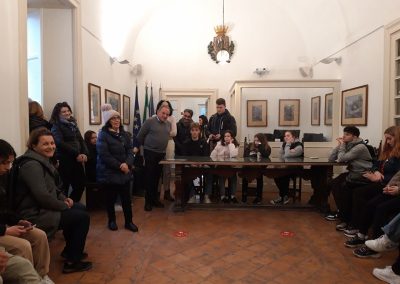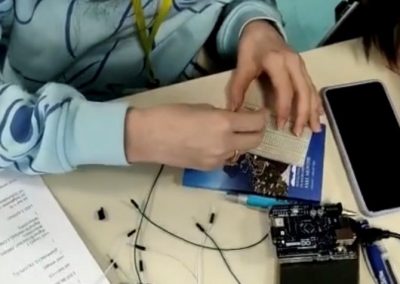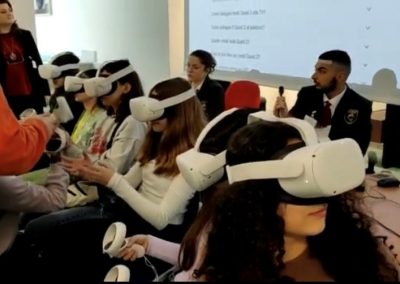The fifth STEM LTT Report (Italy)
The LTT activities in Italy aimed to focus on what STEM is through the use of different workshops which involved the students of all countries in group activities. Thanks to the technologies with which the school in Capri is equipped, the plan of foreseen activities has been implemented with a number of extra elements, responding to the exigence to remove STEM from a mere theoretical concept, in order to integrate its “philosophy” through proper application in different fields.
The Italian Maths and ITC teachers, with the collaboration of all partner teachers, have introduced to all groups of students the different dimensions of STEM (Science, Engineering, Maths, Technology and Design aspects) explaining how they will learn and how they will be evaluated in the process. Various STEM dimensions were debated in the groups after a presentation of new-generation instruments such as Drone, Arduino, VR Headsets and 3 D Printing.
The students were highly motivated and curious to know how these instruments could be programmed and what kind of job opportunities they could offer: teachers were always present to support them and to clarify each single aspect of the learning process. The work in groups through the “enquiry” method made it possible to create expert groups which could disseminate all information and skills acquired in the preceding phases.
At the very beginning of the workshops all participants were encouraged to feel a common sense of belonging, in order to overcome national and cultural differences: the use of the English language as a vehicle to communicate had aimed to create occasions in which to get to know each-other, for discussions and competition contexts.
DAY 1
Welcome ceremony and formation of teams of students through ice-breaking activities
DAY 2
– Introduction of the Arduino code. Arduino is an open source hardware device for creation of prototypes for interactive projects with the use of sensors of various types.
– Short presentation of a 3D Printer by creating little gadgets for the students.
– Use of “clipchamp” application to create a poll among the various nationalities, after watching their welcome video and a series of logo design ideas, to vote for the best overall design for promotional material (Greece wins)
DAY 3
– Photos were taken with a Ricoh theta 360° camera and these were then downloaded to the PC and further edited, designed and modified with another “ThingLink” application.
– Use of Meta Quest 2, an application which made it possible to see the photos through VR headsets
DAY 4
Use of VR Headsets for the presentation of the schools and programming of a drone using “Tello” app.
DAY 5
The work of the previous days was integrated/summed up by making one of the original groups demonstrate what they’ve learned with a presentation. The evaluation process of the students was completed by using the techniques used in cooperative learning method.
The overall goal of this activity was to enable the students to clearly understand the STEM. The motivation of the students who learn what STEM is and how they can incorporate it into their future planning and STEM awareness in the school atmosphere is the reason why this activity was realized. In addition, the reports that the students wrote at the end of the 4th day are the source material, obtained as a result of the field work, for their classmates at home. Learning outcomes of the activity are: positive solidarity, individual responsibility, face-to-face interaction, use of social skills, self-expression, cooperation with different cultures and self-development by implementing self evaluation methods. In the cooperative learning method, the helping behaviour became the most effective one because individuals had to work collaboratively. Participants benefited during the activity as a result of re-organizing the problem and explaining it to the group members in order to solve it. In this process the cooperation improved students by giving them new perspectives. Since STEM is an interdisciplinary concept, the importance of collaborative work was highlighted by this activity. The students developed a strong connection between their previous knowledge and newly learned information, they eliminated the misconceptions and in the end also gained valuable opportunities to eliminate the communication deficiencies between newly found friends.

